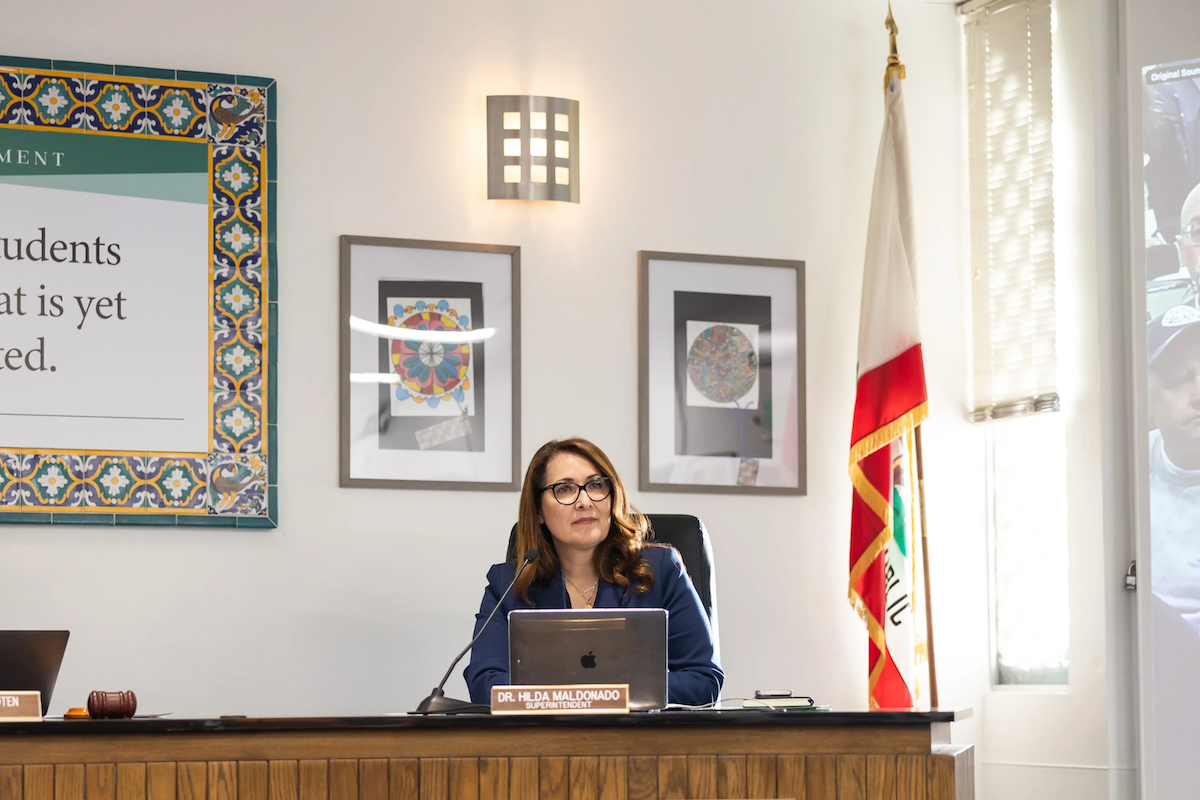Santa Barbara Unified Seeks Waiver for Spending $6.7M Below State Minimum on Teacher Salaries Last School Year
School District Blames Increase in One-Time, COVID-Related Expenses for Tipping the Ratio

As the Santa Barbara Unified School District (SBUSD) and its teachers prepare to enter labor negotiations — with talks of a strike simmering among teachers — the school board voted to apply for a waiver from the California Department of Education (CDE) because it spent less than the minimum required on classroom salaries in 2022-2023.
As a California unified school district, SBUSD is required to spend a minimum of 55 percent of its annual expenditures on teacher salaries, explained Assistant Superintendent of Business Services Kimberly Hernandez. However, the district only spent 51.82 percent on teacher salaries last school year, requiring the district to apply for a waiver from the CDE.
The 3.18 percent difference translates to a little more than $6.7 million below the minimum requirement.
Hernandez premised her presentation by saying that the board was probably unfamiliar with the waiver because the district has never had to apply for it before.
The district’s reasoning for not meeting the minimum salary requirement was that one-time funds and costs associated with the COVID-19 pandemic — air filters, after-school programs, personal protection equipment, computers, etc. — caused increased spending in the 2022-2023 school year and tipped the scales.
Hernandez said that, overall, 81.3 percent of district spending goes to salary and benefits for all district staff (which includes cabinet members and the superintendent, who make upward of $200,000 a year).
“A majority of our budget does go to paying for our people,” Hernandez told the board.
The board room was practically empty after members of the Santa Barbara Teachers Association (SBTA) and their supporters cleared out only moments before Hernandez took the podium. At the beginning of the meeting, the room was overflowing with educators and parents urging the district to raise salaries and benefits for SBUSD teachers.
SBTA President Hozby Galindo said that the district’s level of spending on personnel in general and spending below the state minimum on classroom teachers “shows that the district’s priorities are wrong.”
“It is important to note 55 percent is the minimum required by the state — the minimum,” Galindo said after the meeting.
In the past three years, as noted in the board report, the classroom teacher salary percentage at SBUSD was 55.89 percent in 2019-20, 55.02 percent in 2020-21, and 55.62 percent in 2021-22.
“SBUSD should not be proud of the fact that it has been just above the minimum in recent years and only fell below last year,” Galindo continued. “Our students deserve better than minimum effort.”
As she addressed the board, Hernandez emphasized the district did not pay teachers less and did not reduce staffing in 2022-23 but that the increase in one-time funding tipped the ratio of spending on teacher salaries from 55 to 51.82 percent.
She added that the lower percentage didn’t include the additional 4 percent they paid teachers starting this year, nor the associated $1,000 stipend.
The board report states that 57 teachers were hired during the 2022-23 school year to keep class sizes small, and the amount paid to teachers’ salaries increased by $13 million from 2019-20 to 2022-23, even though the percentage as a total decreased. The district claims it was a “problem for many of the school districts across the state,” because the percentage requirement did not take into account additional COVID-19 expenditures.
“This is an excellent example of why amounts are more important than percentages, because percentages can be deceiving,” noted board vice president Virginia Alvarez, who was the only boardmember to comment on the agenda item at the meeting.
Although the district has taken on new hires, as of October 2, 15 certificated positions remained unfilled in SBUSD, according to a report requested by SBTA. Additionally, nine positions were filled with educators who are not fully credentialed but are allowed to work on special waivers or permits.
“That $6.7 million and more should have been used to attract and retain educators Santa Barbara students deserve,” Galindo said.
As part of its waiver request, the district paid for a report on “comparable rates” in similar unified school districts, such as Carpinteria Unified. It did so to show that it did not reduce its standard of pay when compared to those districts.
When it comes to maximum total compensation, however, Santa Barbara ranked 20th out of 22, at $107,000. The report showed that Santa Barbara is nearly $17,000 below the statewide average. It’s also about $7,000 below Carpinteria, to use a local example.
For total compensation using the lowest scheduled salary plus the district’s contribution to benefits, Santa Barbara ranked 16th — about $6,000 below the state average and $3,000 below Carpinteria.
Although SBUSD does not pay its teachers the lowest salaries, the district contributes the least to the health and welfare benefits of its employees out of all comparable districts in the report.
That explains why it is ranked lower for total compensation than districts like Carpinteria, which have lower scheduled salaries, but significantly higher contributions to health and welfare benefits.
For comparison, Carpinteria Unified pays an average benefit contribution of $19,540 to its employees. In Santa Barbara Unified, that average is $7,915.
SBTA and SBUSD have said that wages and benefits are among the most important topics to be discussed at the bargaining table. Negotiations for the 2024-2027 successor contract between the district and SBTA begin on November 15.
